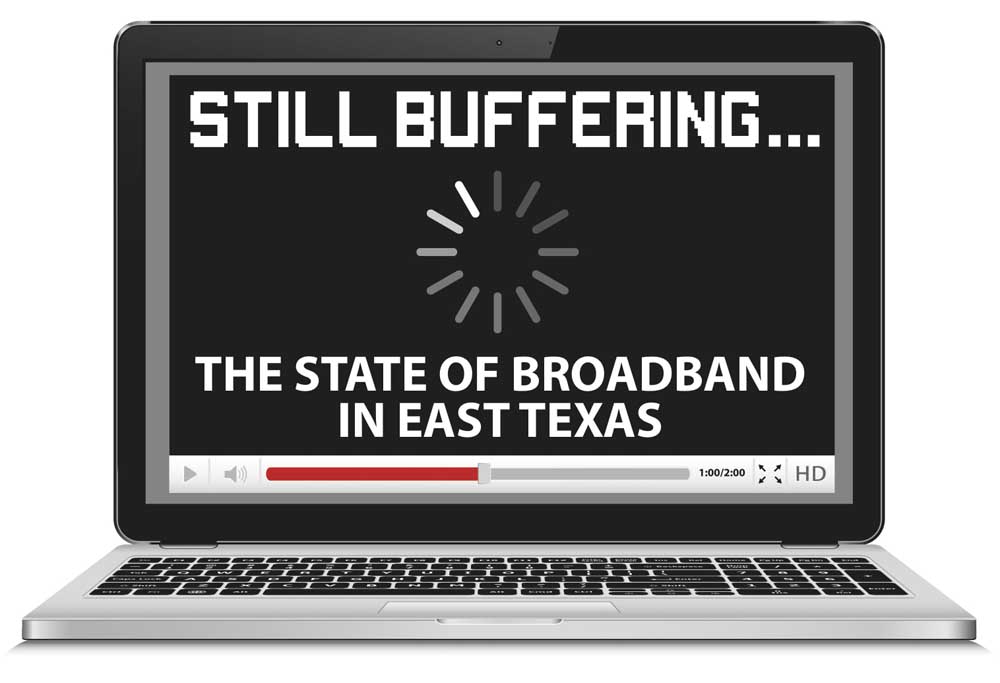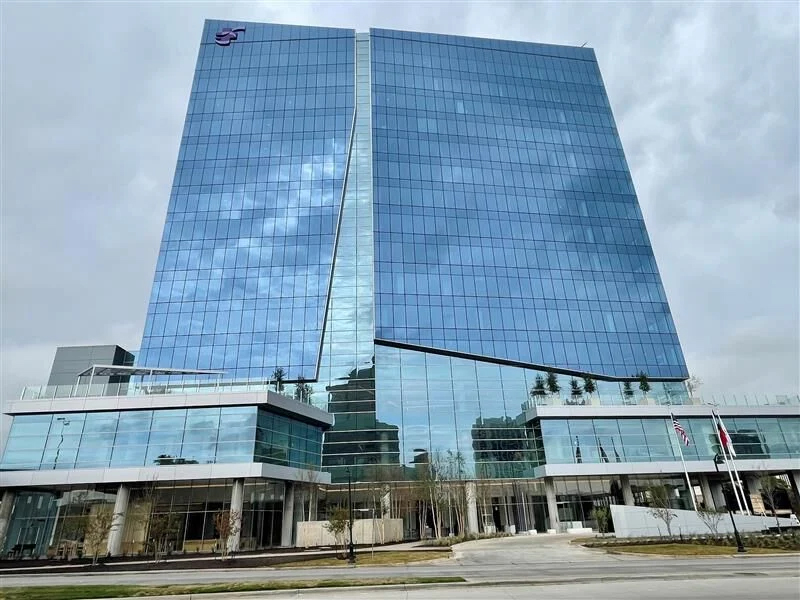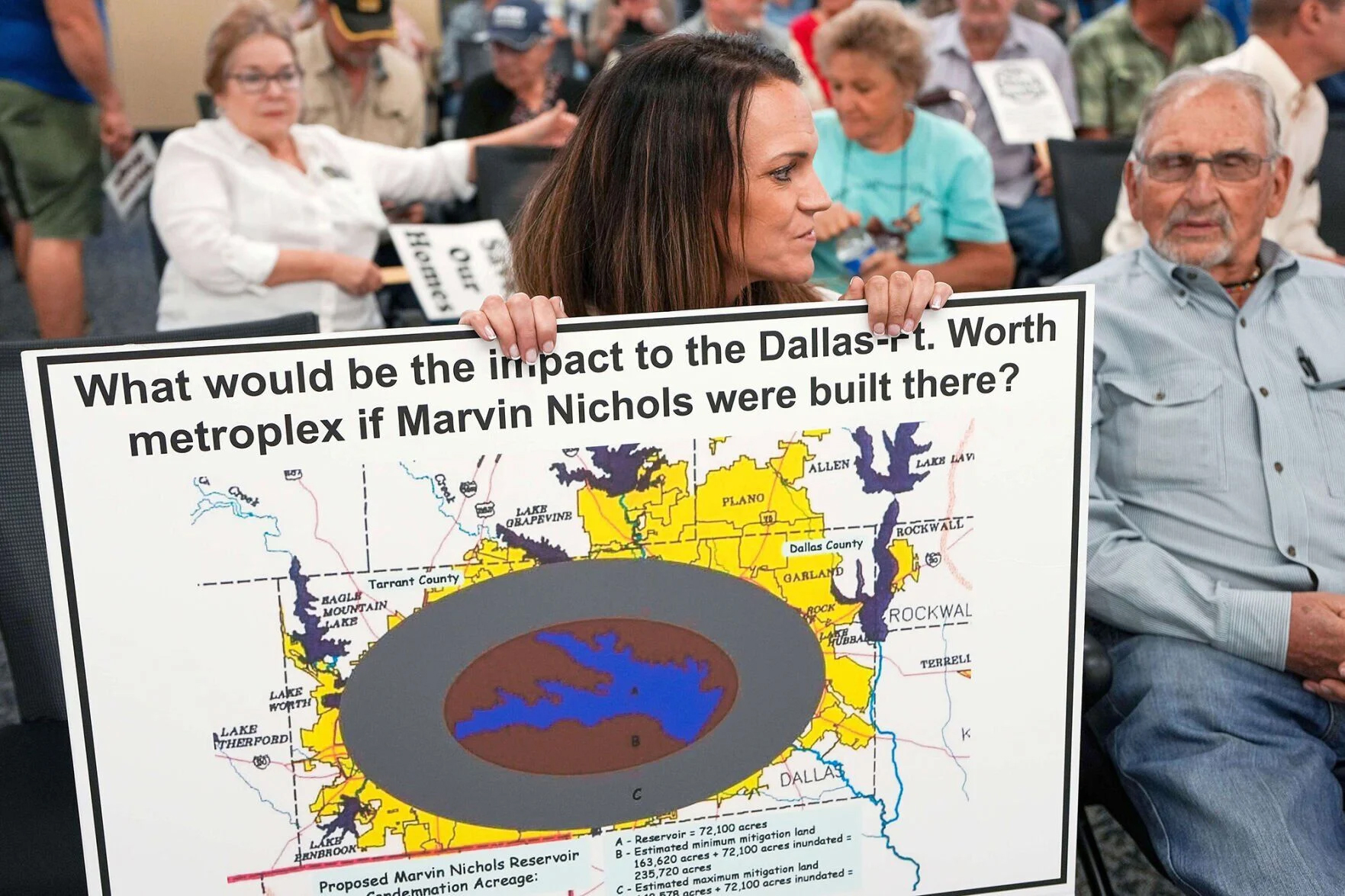Still Buffering: How East Texas lags the rest of the state in broadband
Published 6:00 am Sunday, March 24, 2019

- Still Buffering is a five-part series on connectivity in East Texas. (Brian Crane/Tyler Morning Telegraph)
QUITMAN — Sixty-four-year-old Barbara Pinson has 17 grandchildren and great grandchildren. Like many grandparents, she says the kids don’t visit as often as she’d like.
Pinson doesn’t blame the kids. She blames her internet connection. She pays $69.99 per month for enough data to stream a few movies a month and occasionally check Facebook — but at a speed that makes her want to pull her hair out when a webpage is loading.
When she wants to order and return Christmas gifts for the grandchildren on Amazon, she doesn’t use her computer at home. And when the grandkids want to hang out with their friends and watch shows on YouTube all night, they don’t come over.
Pinson said the situation makes her feel awful “because when I did work it was so easy, and once I retired I felt crippled. I really feel crippled and I get really frustrated at them because it should be easier.”
“When I visit my mom in southeast Texas, my family, theirs all works great,” Pinson said of the Internet service in other parts of Texas. “My son in Dallas, it works great. It’s a little slow, but it works. They can’t do it at my house, on my internet.”
Stories like Pinson’s are common across the region. As a broadband connection becomes more integrated into life in the 21st Century — from working to studying to keeping in touch with loved ones — rural East Texas continues to lag the rest of the state.
Forty percent of people living in 41 East Texas counties did not have broadband in 2016, compared to 11 percent of the population statewide. And East Texans accounted for nearly one-third of the state’s 3 million residents without access to broadband that year.
The data comes from a 2016 broadband progress report from the Federal Communications Commission, which defines broadband as a hardwired connection that provides a minimum downloading speed of 25 megabits per second and uploading speed of 3 megabits per second. The 2016 report was the most recent available that highlights residents without service.
That speed, written as 25/3, allows a user to load websites instantly while surfing the Internet, stream television-quality video through services such as Netflix and Hulu, and quickly upload documents to attach them to emails.
Chris Pedersen, a vice president for Connected Nation, said his organization maps out broadband access by household nationwide and has done so in Texas. He said about 1 in 4 rural Texans do not have access to broadband, based on the FCC’s data, but the FCC’s data is likely understating the problem.
He said the FCC’s methodology allows internet service providers to report who it serves in clusters of 100 homes, not individual homes. That means if the company provides service at 25/3 to one home in that cluster, the company can report all 100 homes as being served, he said.
Under that methodology, 68 percent of people in Wood County — like Pinson — did not have access to broadband in 2016, according to the Federal Communications Commission. The situation was more pronounced in Marion County (78 percent), Upshur County (87 percent), Van Zandt County (94 percent) and Rains County (95 percent).
The more-rural counties were faring slightly worse than counties with larger cities such as Smith and Gregg, which have Tyler and Longview, respectively. Sixty-two percent of residents in East Texas counties with populations under 50,000 lacked broadband, versus 38 percent in East Texas counties with more than 50,000 residents.
The state of Texas cannot regulate internet in these areas in the way it regulates access and prices to utilities like wired telephones, according to Andrew Barlow, a spokesman for the Texas Public Utility Commission. Instead, oversight of the issue lies with the Federal Communications Commission.
“The FCC has oversight of the internet, deeming it an information service rather than a telecommunications service,” Barlow said. “While the FCC delegates enforcement of federal statutes and rules for telecom to state agencies like us, they do not for information services.”
Ajit Pai, the chairman of the Federal Communications Commission, said when he took office in 2017 that one of his top priorities would be to close what many call the “digital divide” between people who have access to broadband and people who don’t.
“I believe one of our core priorities going forward should be to close that divide — to do what’s necessary to help the private sector build networks, send signals and distribute information to American consumers, regardless of race, gender, religion, sexual orientation or anything else,” Pai said at the time.
However, the Federal Communications Commission’s major initiative for increasing residential broadband access is a grant program that pays Internet service providers to offer speeds of at least 10 megabits per second downloading and 1 megabit per second uploading.
That’s one-third the speed of the commission’s definition of broadband, and one-hundredth the speed of the gigabit connections that are becoming popular in major cities through some of the nation’s largest internet service providers.
“There is kind of an outcry, not just in Texas, but in rural communities, that they need broadband, increasingly so, because you need it to do just about anything,” Pedersen, from Connected Nation, said.
Pedersen said his organization has been going on listening tours around Texas to understand the needs. He said some people have internet connections but don’t realize what they’re missing because of the slow speed.
“I say, ‘Well, do you have broadband’ and they say ‘Yeah,’ and then I realize that they’re thinking about just having internet,” Pedersen said. “But they’re connecting at like one megabit per second.
“I had a conversation with a city manager about it taking four hours to download a PDF,” he said. “That’s not broadband.”
TWITTER and INSTAGRAM: @_erinmansfield
This is part one of a five-part series about how a lack of connectivity affects East Texans.
Part 1: East Texas lags the rest of the state in broadband
Part 2: Rural libraries fill the broadband void
Part 3: Some East Texans say broadband is too slow and too expensive
Part 4: How a federal grant helped
Part 5: A decade of work has gone into broadband grant seeking.






